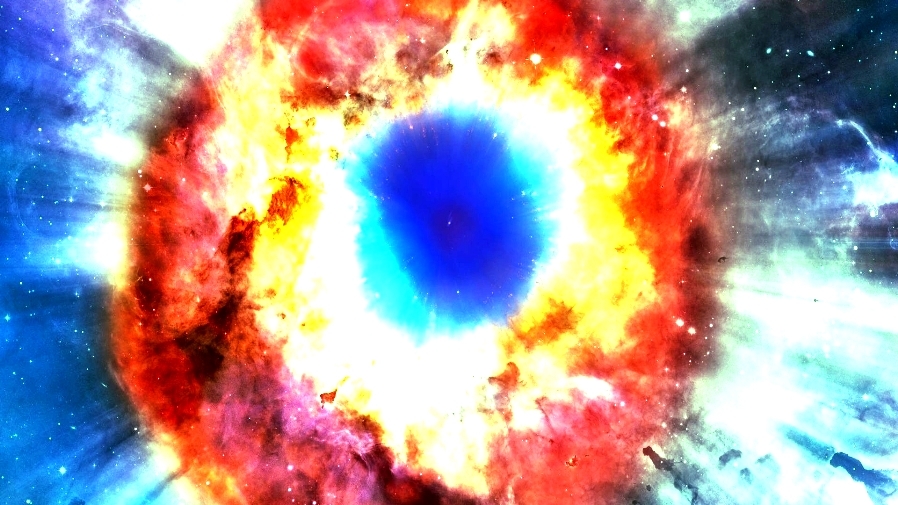 In grammar school one of my treasures was a telescope. If the Friday night sky was clear the university’s telescope was open to the public. It was located on the other side of the ridge, which blocked some of the town’s light. I would peddle the 6 miles to wonder what it was all about. A major thrill was when I was allowed to stay up late to witness an eclipse of the Moon. When I realized that I didn’t want to continue to pursue a major in math, I flirted with astronomy as the alternate. I have never been able to escape the attraction of the universe.
In grammar school one of my treasures was a telescope. If the Friday night sky was clear the university’s telescope was open to the public. It was located on the other side of the ridge, which blocked some of the town’s light. I would peddle the 6 miles to wonder what it was all about. A major thrill was when I was allowed to stay up late to witness an eclipse of the Moon. When I realized that I didn’t want to continue to pursue a major in math, I flirted with astronomy as the alternate. I have never been able to escape the attraction of the universe.
An Update – April 20, 2022 – In what would seem to support my claim that the universe is far larger and older that it could possibly be were it the generally accepted 13.7 billion years old, a report came out a couple of weeks back that established a newly found object as being 33.5 billion years away. I have seen a few other such indications since this article was first published but none near this age or s well-documented. This measurement was obviously in only one direction and there is no reason to engrave this in stone as being the final word on distance or age. Quickly coming up on the personal age of 83 this year, I consider it unlikely that I will come close to matching that degree of antiquity.
As an aside, there are plenty of benighted souls out there that don’t believe that the big bang and religion can coexist. They might be surprised to discover that the concept came from a Jesuit priest, Monsignor Georges Lemaître in 1927. In 1951, Pope Pius XII declared that the theory validated both creationism and the Catholic church. Georges let Papa know that he didn’t appreciate him mixing science and religion. The pope backed off.
I make no claim to having kept fully abreast of either astronomy or its branch of mathematics. That has failed to stifle questions about two particular matters: black holes and the big bang. They have troubled me for decades. I have developed alternatives to the accepted dogmas but my status as an interested but uncredentialled bystander have kept me from embarrassing myself by letting anyone other than a few friends share my doubts and my own theories. I am now prepared to embarrass myself.
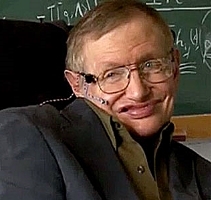 In January I was mentioning to a friend that the theory of black holes was incorrect. While I fail to retain much of the math I learned more than 50 years ago, the accepted proofs did not seem credible. Four days later, Stephen Hawking posted a paper on the Internet stating that the accepted math concerning black holes was flawed and needed to be revised.
In January I was mentioning to a friend that the theory of black holes was incorrect. While I fail to retain much of the math I learned more than 50 years ago, the accepted proofs did not seem credible. Four days later, Stephen Hawking posted a paper on the Internet stating that the accepted math concerning black holes was flawed and needed to be revised.
That event and my approaching senility has prompted me to open myself to ridicule. What can they do to me; cut my Social Security checks in half? If not enlightened, at least be entertained by the presumptions of someone elderly enough that people don’t doubt me when I tell them that the ringing in my ears is left over from the big bang.
From the British science journal, Nature:
Most physicists foolhardy enough to write a paper claiming that “there are no black holes” — at least not in the sense we usually imagine — would probably be dismissed as cranks [ed. That may be a reference to me and my ilk]. But when the call to redefine these cosmic crunchers comes from Stephen Hawking, it’s worth taking notice. In a paper posted online, the physicist, based at the University of Cambridge, UK, and one of the creators of modern black-hole theory, does away with the notion of an event horizon, the invisible boundary thought to shroud every black hole, beyond which nothing, not even light, can escape.
In its stead, Hawking’s radical proposal is a much more benign “apparent horizon”, which only temporarily holds matter and energy prisoner before eventually releasing them, albeit in a more garbled form.
The math was in conflict with quantum theory.
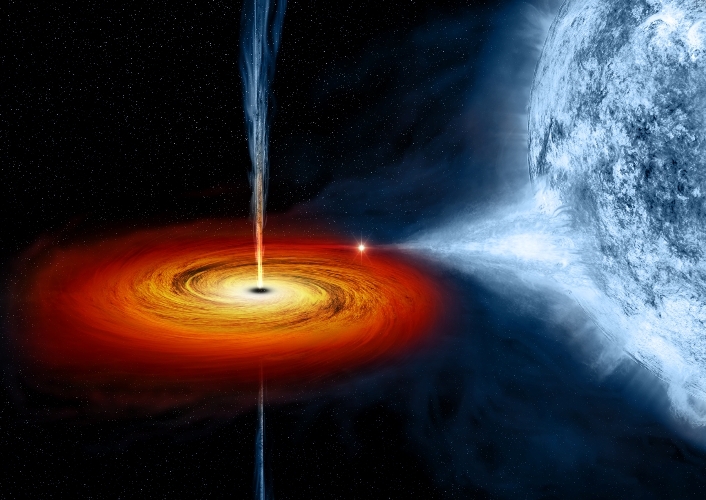 Another little problem was that the entire theory was in conflict with the theory of relativity. The classic theory of black holes claimed that information entering one disappeared . . . was forever lost . . . gone. Relativity says, “That can’t be.” So now, Professor Hawking’s new proposal accounts for the eventual evaporation of black holes. This allows them to return the information from a state of nonexistence back to us, albeit in some garbled form.
Another little problem was that the entire theory was in conflict with the theory of relativity. The classic theory of black holes claimed that information entering one disappeared . . . was forever lost . . . gone. Relativity says, “That can’t be.” So now, Professor Hawking’s new proposal accounts for the eventual evaporation of black holes. This allows them to return the information from a state of nonexistence back to us, albeit in some garbled form.
Does this solve the problem? I’m left to wonder why the mechanism is evaporation. Why don’t black holes go out with a moderate-size bang? Or, perhaps, should the granddaddy of them all been The Big Evaporation?
The concept of black holes had always bothered me. Supposedly, not even light could escape, yet artists depictions, informed by scientists, showed x-rays emanating from them. X-rays could escape but light could not? They are both electromagnetic radiation. They differ in frequency. Both occupy small slivers of the overall electromagnetic radiation spectrum.
The initial problem that occurred to me was the origin of the big bang. Would not the singularity that became the universe be the ultimate black hole? My understanding is that both you and I escaped that particular black hole.
And Now To The Main Event
If you point a sufficiently powerful telescope in a certain direction there is a point beyond which there seems to be no matter. No stars. No galaxies. Point it in the opposite direction, the same result. Point it in a multitude of other, perpendicular directions and more powerful instruments continue to discover even more pieces of this universe.
What are we looking at? For the moment think of a coin. It has a certain thickness but extends further in the perpendicular. Remember, however, that while we can see the thickness, the extent of the other dimension is yet to be determined. Just to add a bit of complexity, imagine that this “coin” is slightly concave. Now, keep extending the edges of that concave object evenly in all directions. Voilà, a sphere.
A sphere? Yep. Our universe.
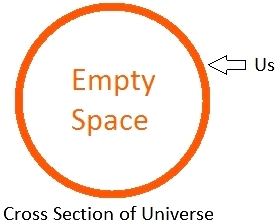 Explode something. Anything. A firecracker. A grenade. A lump of C4. What happens? The casing makes every effort to get as far away from the initial point as its energy will allow. Some pieces may embed in the ground. Others may embed in any object that gets in its way. The rest will continue until exhausted. If you exploded one in a vacuum, none of its solid elements would be found still at the point of explosion. The surviving pieces would end in a sort of shell . . . a sphere. Have you ever seen a depiction of the universe that matched that description? Every one I have seen shows the entire area population of various elements as somewhat diffused and scattered . . . no empty center.
Explode something. Anything. A firecracker. A grenade. A lump of C4. What happens? The casing makes every effort to get as far away from the initial point as its energy will allow. Some pieces may embed in the ground. Others may embed in any object that gets in its way. The rest will continue until exhausted. If you exploded one in a vacuum, none of its solid elements would be found still at the point of explosion. The surviving pieces would end in a sort of shell . . . a sphere. Have you ever seen a depiction of the universe that matched that description? Every one I have seen shows the entire area population of various elements as somewhat diffused and scattered . . . no empty center.
What we see is a small part of the universe. To think we have apprehended all or most of it is thinking small. Thinking small has a strange effect. The part that we see cannot account for the effects of the whole. Since we refuse to accept that there is an existing vastness causing these effects we must create some imaginary factors. The universe, the part we see, refuses to behave as the visible universe should, were it the entirety. There must be more, so we invent more. That gives us dark matter and dark energy. Have you ever seen any dark matter? What octane of dark energy do you put in your tank? The professionals tell us they are out there, or all around us. They just can’t seem to find them outside of those spurious mathematical contortions.
 To honor those theorists who gave us dark energy and dark matter, I have used a dark dot (that concave “coin”) to illustrate the portion of the universe that they see as its entirety.
To honor those theorists who gave us dark energy and dark matter, I have used a dark dot (that concave “coin”) to illustrate the portion of the universe that they see as its entirety.
They tell us that dark matter and dark energy compose 95% of the total. If the little circle, the concave “coin” of our experience is one-twentieth of the entire surface of the sphere, the nineteen-twentieths that are beyond our scope provide the missing 95% needed to make the system work. It accomplishes that little task without resort to such fantasies as dark matter and dark energy.
Actually, the distances of much of the universe would lessen its gravitational effect such that the universe would be much more than twenty times what we can see. Dark matter and dark energy are posited to be close, within our observable scope, so far less mass would be required for their Rube Goldberg construct. Perhaps those creative mathematicians forgot Occam’s Razor, or never learned it.
What about the claims that the universe is expanding at an increasing rate. I’ve never measured the speed of elements flung around by an explosion. I am inclined, though, to suspect that objects accelerate from zero, quickly reach maximum speed then become slower. My experience and suspicions may not stand up when confronted by fantasy math.
Astronomers measure the speed of various galaxies. The further away they are, the greater the speed of separation. The conclusion? The universe must be expanding at an increasing rate. Therefore, the need to introduce the concepts of dark matter and dark energy to explain this supposed phenomenon. A rejection of the observable being the entirety comes with the possibility of applying a new perspective . . . one that quite simply and adequately explains the apparent increasing velocity.
Do not be intimidated. Just read the text and look at the graphic. All of the math will be left to the geeks, of which having been one, I have long since recanted.
As illustrated, draw 2 straight lines with a common point of origin at some angle to each other, perhaps 45 degrees. Add dots to each line at the same intervals from each other and the point of origin. Label the origin and each dot. Then draw lines between the matching dots. Problem solved. How? Okay, here goes.
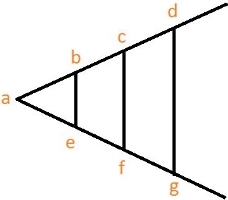 The conjunction (a) represents the common point of origin, the position of the singularity that became the Big Bang. Two dots, galaxies, if you will, have reached the first dots on their respective courses (b & e). Measurements of relative distance and velocity are taken. The same takes place when the second set of dots are reached (c & f). This recurs also at the third set (d & g).
The conjunction (a) represents the common point of origin, the position of the singularity that became the Big Bang. Two dots, galaxies, if you will, have reached the first dots on their respective courses (b & e). Measurements of relative distance and velocity are taken. The same takes place when the second set of dots are reached (c & f). This recurs also at the third set (d & g).
Along the two lines, the intervals of time are the same. The speed at which the dots/galaxies travel along those lines are the same. In fact, the speeds could be slightly reduced as the gravity of the universe works to reduce their velocities. Either way, the distance from one dot/galaxy to its mate increases from one set to the next. This happens while the time intervals along each line remain the same and the speed essentially so.
Traveling further in the same amount of time suggests an increase in speed. While that appears to be the case relative to the matched dots/galaxies, each dot/galaxy is either remaining at the same speed or slowing slightly. Why? Because their actual speed going in different directions causes their speed relative to each other to be measured as though they were tracks exactly opposite to each other, which they are not. While the distance and speed of separation between two dots/galaxies is important if you are traveling from one to the other, those measurements are of no consequence in determining the size, shape and rate of expansion of the universe itself.
The Inflation Theory
There’s at least one more of those fantasy theories that we can dispose of. Scientists noticed something else that they perceived as a problem. The temperature across the observable universe appeared uniform. Why is that a problem?
If you begin filling a swimming pool with hot water, the temperature will be much hotter at the point where the water enters than at points away from that point. Looking at only the observable universe, it would be too young for the temperature to have stabilized, particularly an expanding universe.
Not to worry. There are plenty of creative people out there. Alan Guth, a professor at MIT, came to the rescue. It’s one more ‘answer’ that requires one to ignore what we think we know. Old Albert Einstein told us that there is a universal speed limit. Electromagnetic radiation, most obviously that part of the spectrum known as light, travels at that limit. Al apparently thought he had proved that the limit existed.
Dr. Guth, however, can’t explain his ‘answer’ without abrogating that speed limit, at least long enough to make his unicorn real model work. He posits that during the Big Bang the four forces (gravity, electromagnetic, weak and strong) had not yet become separate forces, but together were a super force. We all know that the sum of the parts cannot be greater than the whole. Guth wants us to believe that the whole is greater than the sum of the parts.
This putative ‘super force’ caused the elements of the universe expanded faster than the speed of light. How? He doesn’t have a rational answer. Why? Because, otherwise, his theory can’t be forced to work. It’s also necessary to ignore the holes in the theory.
A lot of resources were spent in a seven-year experiment in an attempt to prove this. A spacecraft called the Wilkinson Microwave Anisotropy Probe, WMAP, collected an enormous amount of data. The data confirmed his theory, of course. How? The same way that true believers find support for their religious beliefs, despite any pesky facts. Given the ephemeral foundation upon which the theory rests, it is easy to interpret the data in any manner one wishes.
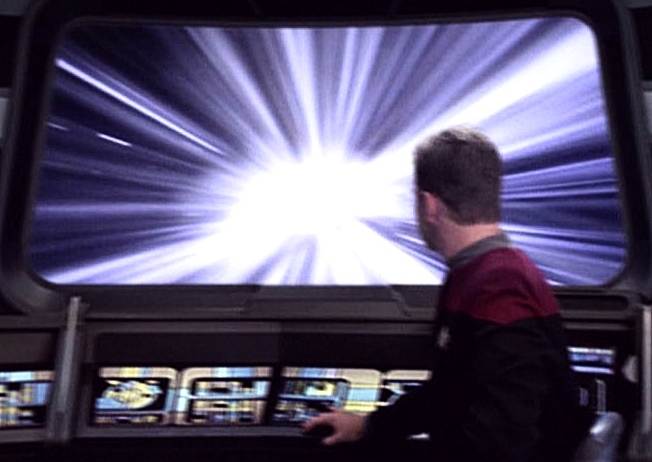 So, this theory is generally accepted in the scientific community. If you look back above at the sphere, you will notice that everything we see is essentially the same distance from the center of the sphere, the point of ogrigin. That being the case, of course all we see has cooled to essentially the same degree. See how much easier that is. See how one change in perspective can make sense of so many problems and eliminate the need for dark matter, dark energy, super force, et al?
So, this theory is generally accepted in the scientific community. If you look back above at the sphere, you will notice that everything we see is essentially the same distance from the center of the sphere, the point of ogrigin. That being the case, of course all we see has cooled to essentially the same degree. See how much easier that is. See how one change in perspective can make sense of so many problems and eliminate the need for dark matter, dark energy, super force, et al?
It turns out that Inflation Theory, as warp speed, is really just science fiction.
Those more current on developments in astronomy and math very well may shoot down my theories. I do, however, retain some confidence that the average non-professional reader will understand and appreciate that they do conform to common perceptions and at least seem to end up with logical conclusions. If the public doesn’t understand what the scientists are pushing it is not the fault of the public.
The problems lie with the scientists. They want acceptance and accolades. They covet funding for their projects. Some may even hope for an educated public. If that’s what they desire it’s their responsibility to make it happen. The public need not master all of the details, all of the mathematics, but if their general conclusions are so obtuse as to defy general comprehension they should not expect enthusiastic support from the public they have ignored.
Also, if they cannot explain their postulations, that may suggest that those postulations are the problems, not the answers. Science needs as much support now and in the future as ever. That support will not come from an uncomprehending public.
This article may be somewhat longer than I usually intend but, then again, it’s a fairly big subject.
.




